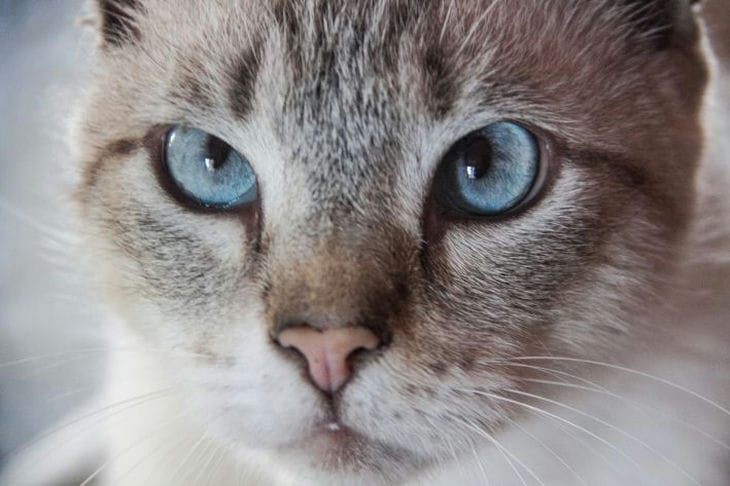The soft, soothing purr of a cat is one of the most recognizable sounds in the pet world.
It is a vocal display that many cat owners perceive as a sign of pleasure and comfort.
But in fact, the reasons why cats purr are much deeper and more interesting than it might seem at first glance.

The Anatomy of a Purr
To understand why cats purr, it is necessary to consider the features of their anatomy and physiology.
Purring is generated by rapid contractions of the muscles in the cat's larynx and pharynx. This is due to the presence of special muscle fibers attached to the hyoid bone and cartilage in the throat.
When inhaling and exhaling, these muscles contract quickly, bringing the membranes of the larynx closer together. This creates a vibration that we perceive as purring. Moreover, the frequency of muscle contractions can vary, which explains the variety of tonality and rhythm of purring in different cats.
Interestingly, a similar mechanism for producing sounds is found in some other mammals, such as leopards, lynxes, and even mongooses. But it is cats that are most famous for their ability to purr.
Functions of purring
Why do cats use this feature of their vocal apparatus so actively? Scientists identify several main functions of purring in these animals.
The most well-known and widespread function of purring is to express pleasure, comfort, and positive emotions. When a cat is curled up on its owner's lap or enjoying being scratched, it will usually begin to purr softly. This indicates that it is relaxed and content.
Cats also use purring to establish social bonds. For example, a mother cat purrs to calm and encourage her kittens. And cats living together also often exchange these sounds, thereby strengthening their relationship.
Many studies show that cats adapt their purring to effectively communicate with humans. They can change the tone, volume, and even the frequency of vibrations to get their owner's attention and express their needs.
Interestingly, purring may also play a role in the self-healing process in cats. The vibration frequency of purring has been found to be the same as the frequency that stimulates bone healing and tissue regeneration. This sound may help cats recover more quickly from injuries or illnesses.
Thus, purring is a multifunctional manifestation that allows cats to express their internal state, establish social connections, and even promote their own health.
Evolutionary aspects of purring
The origin and evolution of purring in cats is also of great interest to scientists. It is believed that the ability to purr appeared in the ancestors of modern cats back in the Paleocene era, approximately 55-58 million years ago. This is due to the general trend in the evolution of vocal manifestations in mammals.
It is believed that purring originally played an important role in communication between mother and cubs.
It helped to establish a bond, to soothe, and perhaps even to facilitate feeding of babies. As cat species evolved, purring acquired more functions. It began to be used to express well-being, to attract attention, to maintain social contacts, and even to heal itself.
The ability to purr is present in almost all members of the cat family, from domestic cats to large predators such as lions and tigers. This demonstrates the importance of this vocal manifestation in the evolution and adaptation of these animals.
Impact on humans
In addition to the cats themselves, purring also has a certain effect on the people who become their owners. Numerous studies show that the sound of purring can have a calming and therapeutic effect on humans. It can reduce stress levels, slow down the heart rate, and even promote wound healing.
It is believed that the soft, rhythmic vibrations emanating from a cat activate certain mechanisms in the human brain responsible for the production of hormones associated with relaxation and well-being. Thus, spending time with a purring cat can have a positive effect on the mental and physical state of the owner.
This effect explains why many people, especially during periods of stress or depression, seek to spend time with their feline pets. The soothing purr helps them find peace of mind and relax.
Thus, cats' purring not only serves as an important means of expression and communication for them, but can also have a positive effect on the mental and physical state of their owners.








